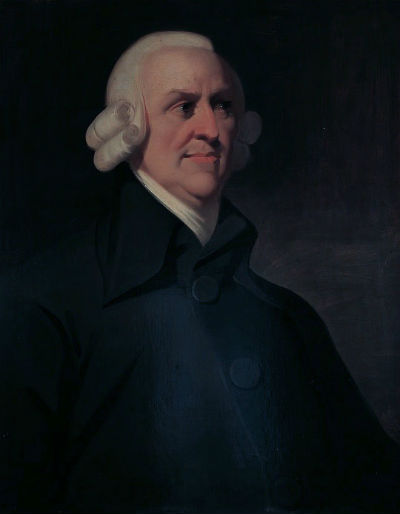 Adam Smith, unknown artist, circa 1800
Adam Smith, unknown artist, circa 1800
Adam Smith has been on the £20 note since 2007. He is the first Scot ever to appear on a Bank of England note. But controversially, Smith is not a unifying figure – although maybe he should be.
He is widely hailed as the inventor of modern economics, and in the 20th century he became something of a hero for proponents of free markets. A think-tank dedicated to the pursuit of economic liberalism bears his name, and Margaret Thatcher famously carried a copy of his book Wealth of Nations with her at all times. Smith is widely celebrated – often by people who haven’t read his works – as a “prophet” of individualism, as the man who foresaw the rise of industrial capitalism and provided the definitive proof that government interference was always harmful.
But although Smith’s name has been invoked by people seeking to legitimize their political and economic agendas, Smith’s own agenda had very little to do with our modern concerns. It can only be understood in the context of late eighteenth-century Scotland.
So – who was the real Adam Smith? Divisive thinker? Prophet of neoliberalism? The founder of economics? What was he trying to achieve, and why and how did he become so closely associated with the idea of free-trade economics? Read on…
Adam Smith and Eighteenth-century Scotland
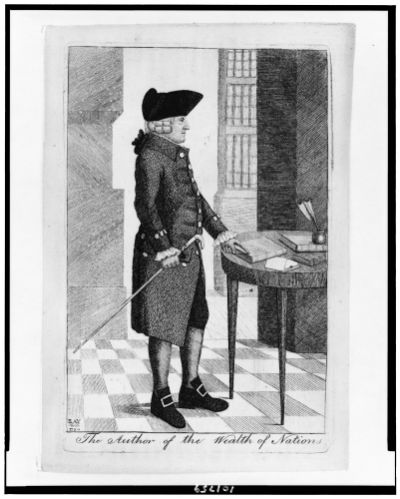 Portrait of Adam Smith, author of 'Wealth of Nations'
Portrait of Adam Smith, author of 'Wealth of Nations'
Adam Smith was born in Kirkaldy in Fife in 1723. He grew up and spent most of his life in the Lowlands of Scotland, where he was part of a network of educated, urban Presbyterians that later came to be known as the “Scottish Enlightenment”. Like most of the ‘enlightened’ elite of Edinburgh and Glasgow, Smith was a strong supporter of the 1707 Union of the English and Scottish Parliaments. He had no time for romantic views of Scotland’s Celtic past: for him, the Highland clans represented a past not far removed from barbarism, which he identified with violence, poverty and arbitrary power. Conversely, he saw England as a beacon of progress and civilisation – a much wealthier country with a powerful elected Parliament and a constitution that protected the rights of its citizens.
Smith spent his formative years in Glasgow, first as a student at the University, then as a Professor of Moral Philosophy between 1753 and 1763. This was a period when Glasgow was asserting its place as a wealthy city of merchants, and benefiting from Scotland’s recent access to Britain’s growing trade empire. Trade links with North America and the Caribbean had existed long before the Union, and by the 1740s the city had become the centre of a thriving trading network. At the University of Glasgow, Smith taught the sons of the wealthy sugar and tobacco merchants who dominated local politics, invested their money in shipping and new industrial development, and were rebuilding Glasgow into an imposing city of stone.
In his Glasgow classes, Smith lectured on “moral philosophy”, which in eighteenth-century Scotland was a broad humanities subject including topics as varied as morals, politics, religion, economics, jurisprudence and history. He reworked some of these lectures into a successful book (The Theory of Moral Sentiments, 1759), which turned him into a household name. This allowed him to leave his university professorship, accepting instead a lucrative position as personal tutor to a young aristocrat. He travelled with his student, and spent almost two years in France. There he not only observed France’s (mainly pre-industrial) economy, but also met with some of the biggest names in the French Enlightenment, including the political economist François Quesnay, who deeply influenced his views.
On his return to Scotland in 1766, Smith spent several years writing up a book that summarized his reflections on the economic system of Europe: this was the Wealth of Nations, which proved an immediate success upon its publication in 1776. Shortly after, he was appointed a commissioner of customs in Edinburgh, where he lived with his mother until his death in 1790.
Smith’s Intellectual Project
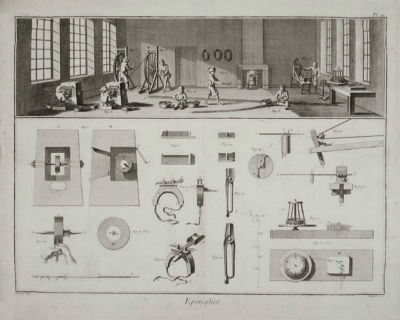 Engraving depicting a pin factory in the 1760s.
Engraving depicting a pin factory in the 1760s.
From Smith’s life story, it is not immediately obvious why he became such an iconic figure of modern economics. He led a comfortable, quiet, studious life, whose only notable adventure was a 2-year stay in France. It is his two books, rather than his acts, that have left their mark on the world.
Nowadays, the Theory of Moral Sentiments is generally only remembered by historians, but Smith’s contemporaries rightly hailed it as a revolutionary book. Other eighteenth-century philosophers were attempting to mould human behaviour according to external commands derived from religion or philosophical systems. Smith, though, argued that human morality was emergent – it was a complex phenomenon, which derived from the interaction of simpler human instincts for both selfishness and “sympathy” (by which he meant, affinity for other people’s feelings).
This may not seem directly related to economic theory – yet it is, in a roundabout way. In the Wealth of Nations, Smith applied a similar reasoning to economic interactions: he argued that the natural instincts of humans, when left to their own devices, often led to economic outcomes that were beneficial to society as a whole, without need for governmental intervention. This is what later became famous as Smith’s so-called “invisible hand” theory. It has been interpreted by some modern readers to mean that individual selfishness was always socially beneficial, and that all governmental intervention was to be avoided.
But this is a caricature of Smith’s writings. The notion of the “invisible hand” was not central to Smith’s purpose: in fact, the expression is only found once in the text, in passing. While Wealth of Nations was a highly innovative account of market economics, it was not a work of pure economic theory. What Smith offered, instead, was a detailed account of Europe’s 18th-century economy. He did not consider economic mechanisms in isolation but rather as part of a broader social, historical and political landscape. The book was not a celebration of individualism, nor was it hailing the rise of a new age of industrialism and free trade. Smith was merely describing the world in which he lived - a pre-industrial society that was experiencing the early stirrings of the Industrial Revolution and just starting to engage in global trade.
Here are two particularly well-known examples of the many contemporary economic developments discussed by Smith:
- By the 18th century, several European monarchies had established monopolistic trading empires in North America and the Caribbean. Smith argued that the cost of maintaining these empires was not worth their economic benefits, and suggested that free trade with independent colonies would be more valuable in the long run. This was a particularly controversial argument to make in the 1770s, as Britain was fighting to keep its American colonies.
- Smith described the benefits of specialization and division of labour in the early industrial factories of 18th-century Britain, and explained how it allowed for increased productivity and overall prosperity. He used the example of a pin factory: a team of ten specialized workers each assigned to a specific task could produce 48,000 pins per day. Without the division of labour, each worker could barely produce one pin per day.
What made Wealth of Nations so innovative was its detailed analysis of economic mechanisms and of the economic policy of nations, at a time when economics did not yet exist as a self-standing discipline. However, Smith was only interested in economics as part of his larger concern for the contemporary development of European society. The recent progress of manufacturing and trade were in the process of deeply transforming 18th-century Europe. A new “commercial” society, built on communications, exchanges and the rule of law, was emerging from the ashes of feudal economies and despotic governments. This new commercial society, Smith argued, could make ordinary people richer and freer.
Yet far from enthusiastically cheering on all the new developments he was observing, Smith was all too aware of their dangers and drawbacks. He pointed out that international trade competition could force less industrialised and less productive countries into a vicious cycle of poverty. He argued that governmental intervention was needed in a number of important areas:
- to break-up naturally-occurring monopolies
- to enforce contract and patent law
- to encourage innovation
- to provide public works such as roads and bridges
- to educate the middle classes
Smith also feared that the repetitive nature of specialized work would see workers pay a heavy emotional, social and intellectual price, and recommended that governments act to counter such negative side-effects.
Smith’s Heritage
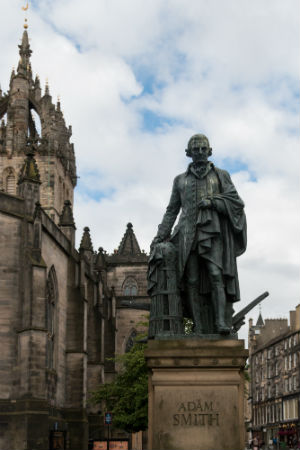 Bronze statue of Adam Smith
Bronze statue of Adam Smith
Wealth of Nations was a massive success throughout Europe, and Smith’s theories soon began to influence political arguments and government policy. In the 19th century “classical” economists inspired by Smith, such as David Ricardo, laid the foundations of economics as we know it by formalizing economic reasonings in mathematical language (something Smith had never attempted). In doing so they isolated economic discourse from the psychological, social and historical contexts in which it had been embedded in the 18th century, transforming it into an abstract “science”. This new “science” continued to be increasingly abstracted, refined and complexified throughout the 19th and 20th century, with many economists all the while maintaining the cult of Smith as its original “inventor”.
Because they separated out the economics from society, they stopped paying attention to his theory of morality or to his calls for government intervention to keep markets working. By the last decades of the 20th century, Smith had been all but deified by supporters of a new free-market ideology. He would likely have been highly puzzled by this – and not a little dismayed.
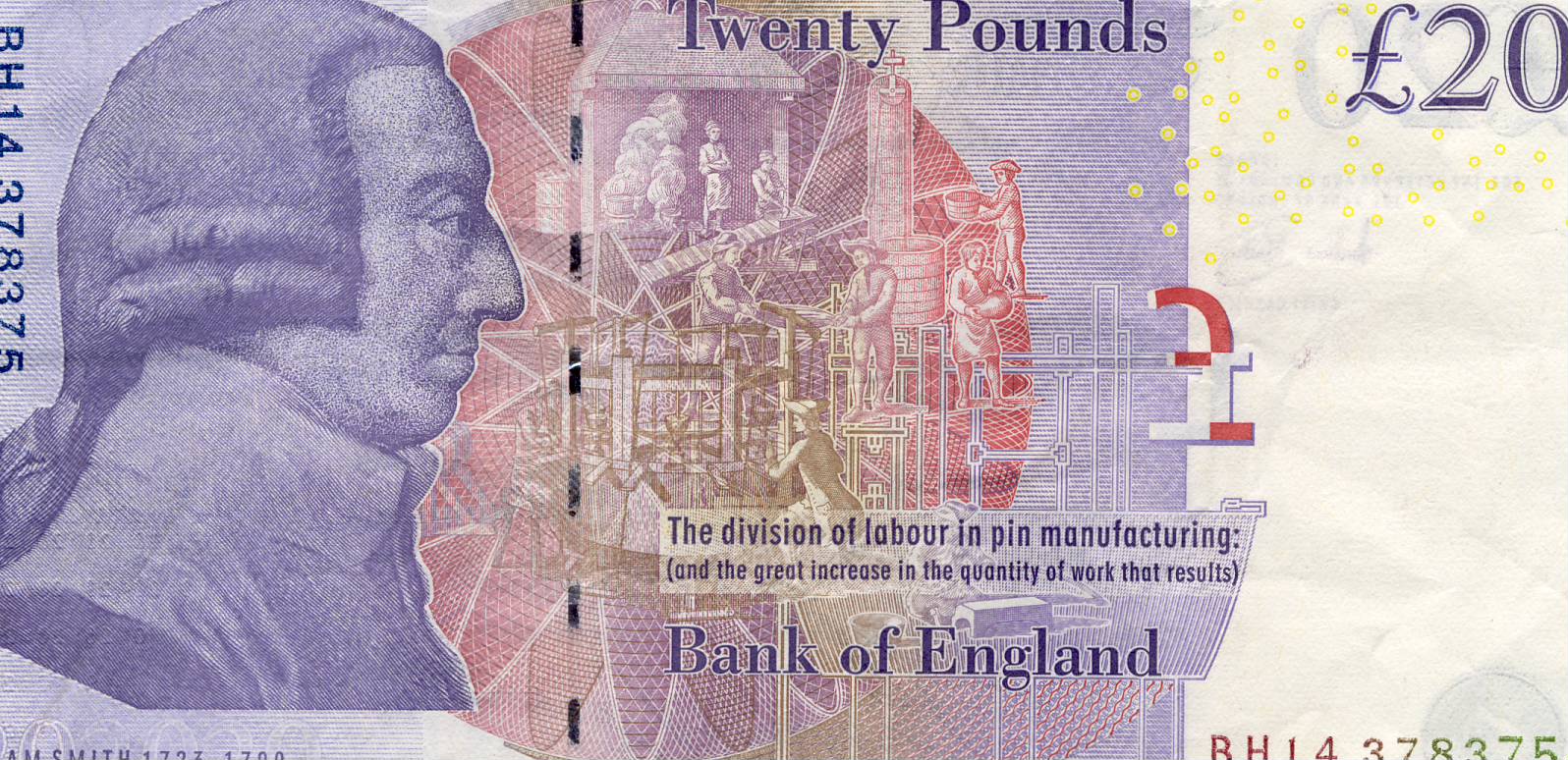



Rate and Review
Rate this article
Review this article
Log into OpenLearn to leave reviews and join in the conversation.
Article reviews